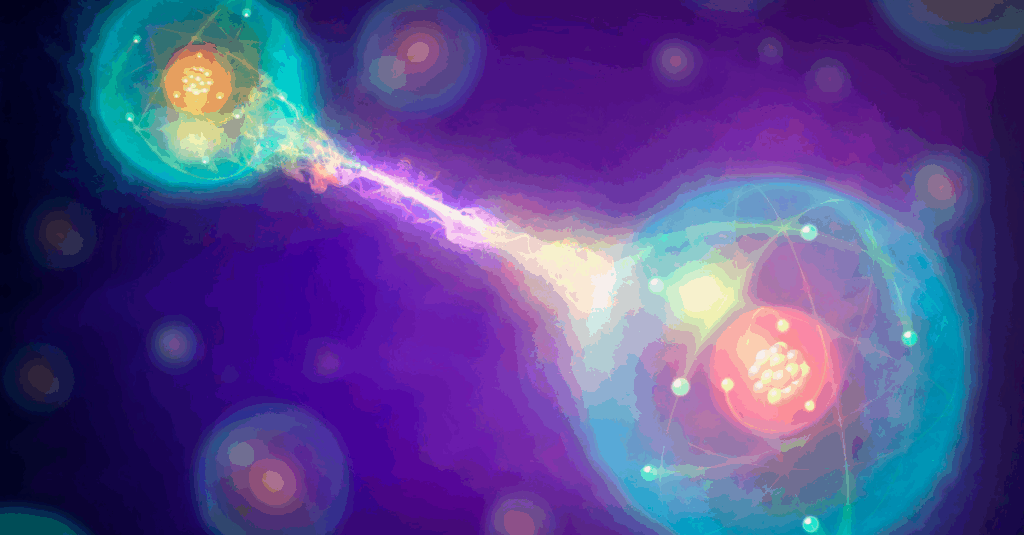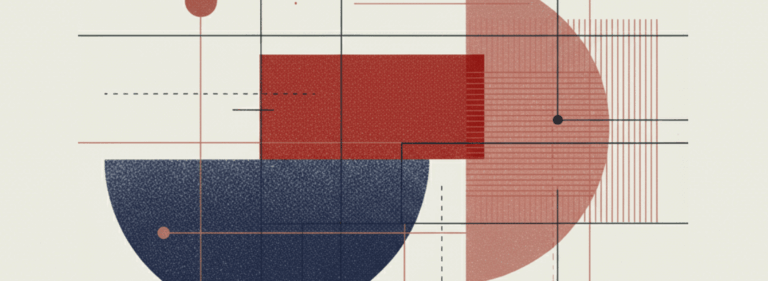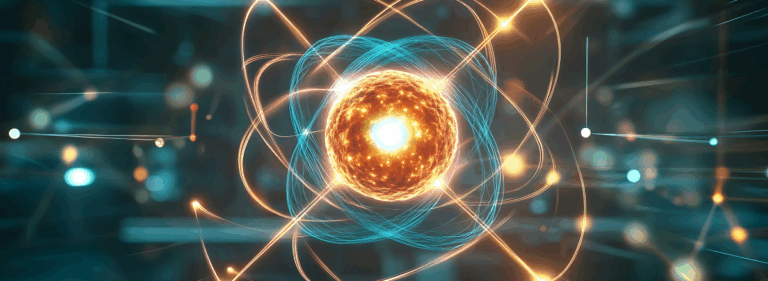Quantum and AI: A powerful partnership for the next digital revolution

This post is the first of a three-part series exploring the relationship between AI and quantum technologies. Here, we examine how they currently work together and identify opportunities and limitations. The second post examines how AI can accelerate the development of quantum technology, and a final post will delve deeper into how quantum technology could, in turn, supercharge tomorrow’s AI-driven breakthroughs.
Every cancer is genetically unique, as is every patient. Doctors today use combinations of surgery, chemotherapy, immunotherapy and radiation – but truly personalised treatments are limited by the complexity of biological data and the time it takes to analyse it. Artificial intelligence (AI) is helping: algorithms can speed up diagnosis and predict drug responses, thereby improving treatment customisation. Yet, even the fastest classical computers struggle to simulate how drugs bind to proteins. Could quantum be the missing technology partner?
Rapid advancements in both AI and quantum technologies, as well as their convergence, are attracting attention from policymakers and industry experts. As reported in the OECD quantum technologies policy primer, this convergence is among the most exciting and potentially transformative developments in digital technology.
What makes AI and quantum an interesting match?
At their cores, AI and quantum technologies have different strengths:
- AI excels at extracting patterns from massive datasets. It already powers medical imaging, precision agriculture and self-driving cars. But its appetite for computing resources is growing exponentially, requiring data centres the size of football fields and driving up energy use and carbon emissions.
- Quantum technologies harness the unique properties of atoms, photons and other particles to gather, process and transmit information in ways classical information technologies cannot. In computing, this could help solve complex problems that are challenging or impossible for classical computers.
Unlike classical computers that use bits to represent either a 0 or a 1, quantum computers use quantum bits (qubits), which can represent 0, 1 or both at once through “superposition”, like a coin spinning in the air, both heads and tails at once until it lands. Another key property, “entanglement”, allows qubits to become interconnected no matter how far apart, like two dice that always roll matching results. These principles are foundational to quantum computing and could enable systems to process information more efficiently than classical computers for certain tasks.

Image credit: Manya Bhargava
There are high hopes for combining AI and quantum computing. Some possibilities still depend on scientific and engineering breakthroughs, but early experiments already show promise in areas like optimisation and quantum system control. Each technology is transformative on its own, but together they could unlock solutions that neither could achieve alone.
Unpacking quantum technologies
Quantum progress builds on a century of discovery. The “first quantum revolution” in the mid-20th century reshaped modern life, giving us transistors, lasers, GPS, nuclear power, MRI and PET scans.
Today’s “second revolution” applies quantum mechanics directly to information and communication, opening a new paradigm for digital economies and society. Quantum technologies are usually grouped into three main branches:
- Quantum sensing measures physical quantities, such as mass, time, and light intensity, with unmatched sensitivity and precision. They are already used in navigation, medical imaging and environmental monitoring.
- Quantum computing could bring dramatic speedups in tasks such as optimisation, simulating molecules and physical systems, and factoring large numbers.
- Quantum communication utilises quantum properties to encode and transmit information, thereby supporting networks of interconnected quantum devices and improving digital security.

The maturity of quantum technologies varies significantly. Several quantum sensors are already commercialised, including medical imaging devices that can scan the brain with unprecedented detail. Portable quantum tools are also helping energy and mining companies map underground deposits with less environmental impact.
Quantum communication is still in its early stages: trial networks exist, but a large-scale rollout faces significant engineering and deployment challenges. Quantum computing is even less mature. Prototypes exist, but none have yet shown clear and consistent advantages over classical computers. Researchers are exploring diverse hardware platforms, from superconducting circuits to trapped ions and photon-based qubits, but no clear standard has emerged.
Despite these uncertainties, global investment in quantum R&D is accelerating. Public funding commitments already exceed USD 55 billion. As the OECD’s quantum technologies policy primer highlights, the next decade will be critical for steering development and governance in line with human-centric and democratic values.
Where quantum could help AI
Reducing the computational burden and energy use involved in training large AI models is the main potential benefit of combining quantum computing with AI. Deep learning and generative models in particular, require rapidly growing computational resources, raising concerns about scalability, energy efficiency and environmental impact.
Quantum machine learning: Promising but not ready
Quantum machine learning explores how quantum computing can be applied to machine learning tasks. The idea is that quantum algorithms might process information more efficiently than classical ones. But major hurdles remain. Today’s quantum computers are fragile, with limited qubits, high error rates and unclear hardware roadmaps. Moving massive datasets into quantum memory is slow, and most proposed algorithms have yet to outperform classical ones. This is why practical quantum machine learning applications are unlikely to emerge within the next decade.
Despite the theoretical promise, quantum machine learning is not yet viable for practical use due to significant technical and engineering challenges:
Hardware limitations:
- Fragile qubits: Today’s qubits are extremely delicate, suffering from decoherence (loss of quantum properties) quickly due to noise (like temperature or vibration).
- High error rates: Error suppression techniques are still insufficient. Error rates currently range from 0.1% to 1%, far above the necessary threshold of 0.0001% required for most commercial applications.
- Insufficient scale: Current quantum computers only have thousands of qubits, but practical applications are expected to require millions of physical qubits.
Additional technical hurdles for quantum machine learning:
- The data bottleneck: It is slow and cumbersome to move the massive datasets (terabytes) that modern AI models rely on into and out of quantum memory.
- Unproven speedup: Many proposed quantum machine learning routines have yet to prove they can actually outperform today’s highly optimised classical algorithms.
- Unclear roadmap: The necessary hardware specifications for quantum-AI (including the exact number of qubits, their required coherence time and how they should be interconnected) remain unclear, complicating the development of practical hardware and software roadmaps.
AI for quantum and hybrid computing
The synergy between AI and quantum technology is not limited to machine learning. AI can help develop quantum systems by optimising circuits, calibrating qubits and correcting errors. It can also enhance the precision of quantum sensors and help manage complex quantum communication networks.
On the other hand, hybrid classical-quantum computing could accelerate AI training, speed up calculations and reduce energy use. Real-world examples are emerging. In material discovery, AI helps identify optimal compounds, while quantum simulations model their properties at the atomic level.
As both fields evolve, their convergence is expected to drive innovation in areas that require intensive data processing and complex problem-solving, such as drug discovery, climate modelling, and smart manufacturing. AI and quantum could become a “mutually reinforcing power couple”, reshaping the digital economy and society.
The next posts in this series will examine this partnership more closely, focusing first on how AI is helping to develop quantum technologies and later on how quantum technologies could, in turn, supercharge AI applications.
Learn more about OECD’s work on Quantum Technologies: https://www.oecd.org/en/topics/sub-issues/quantum-technologies.html


































